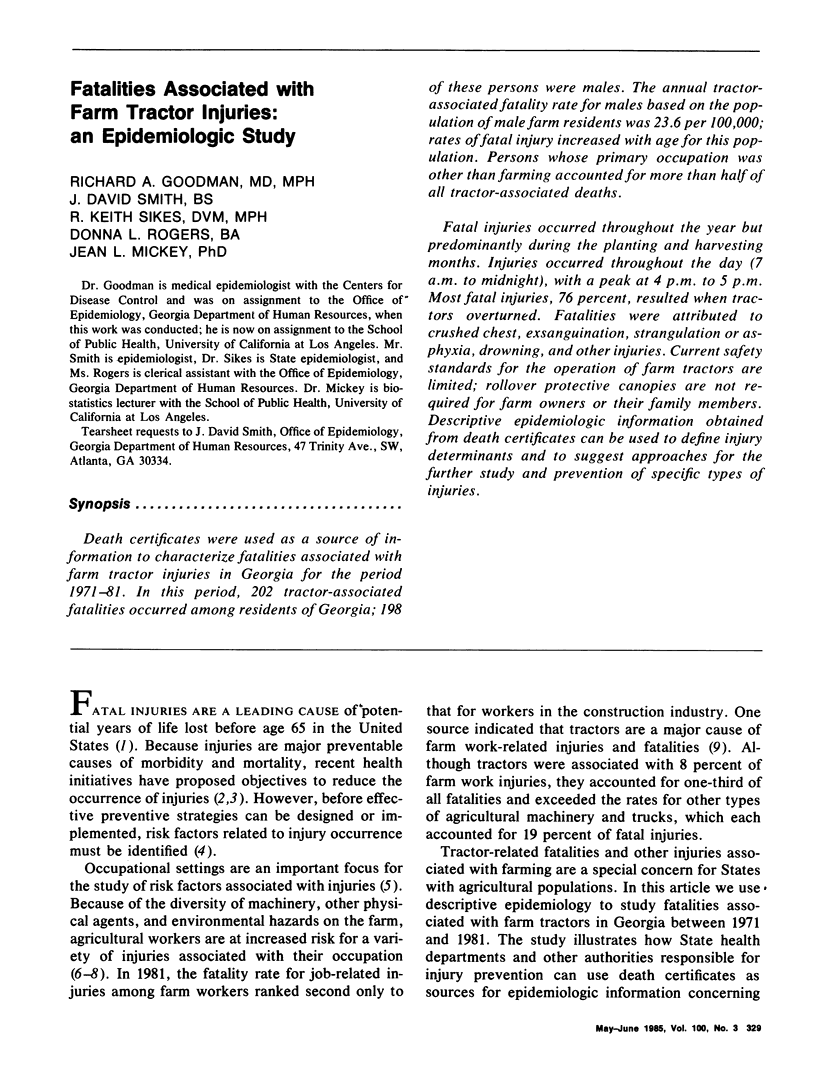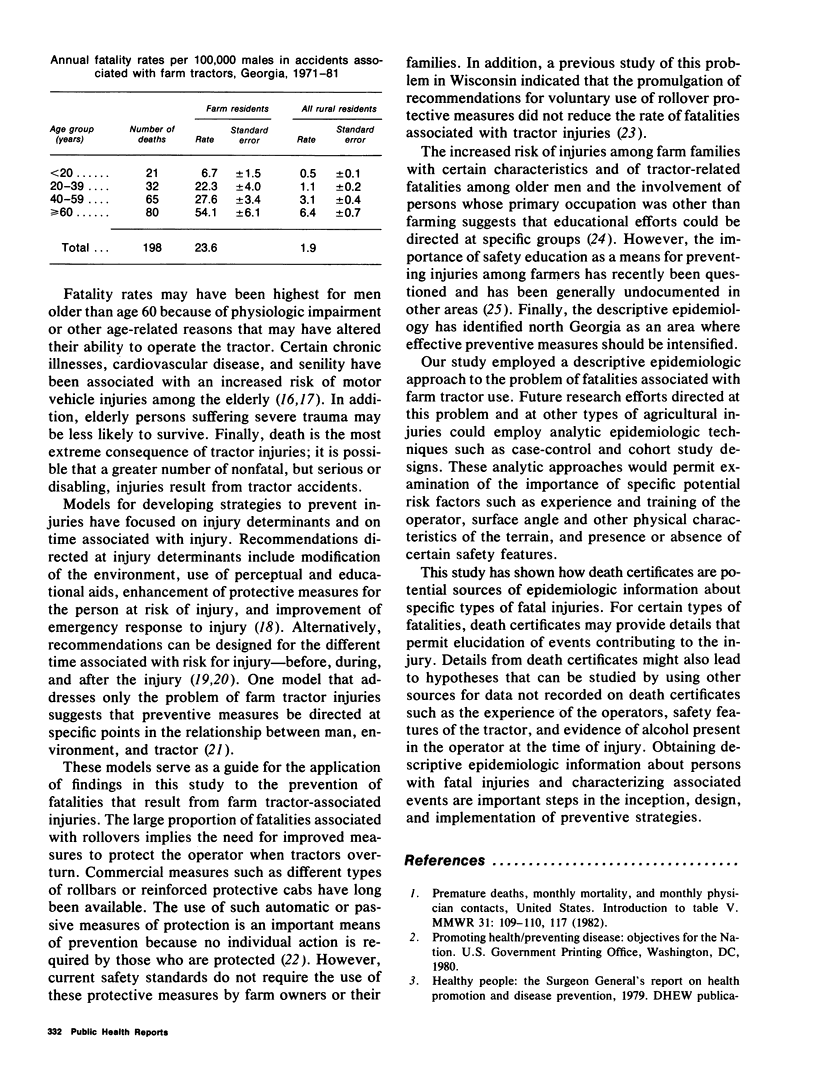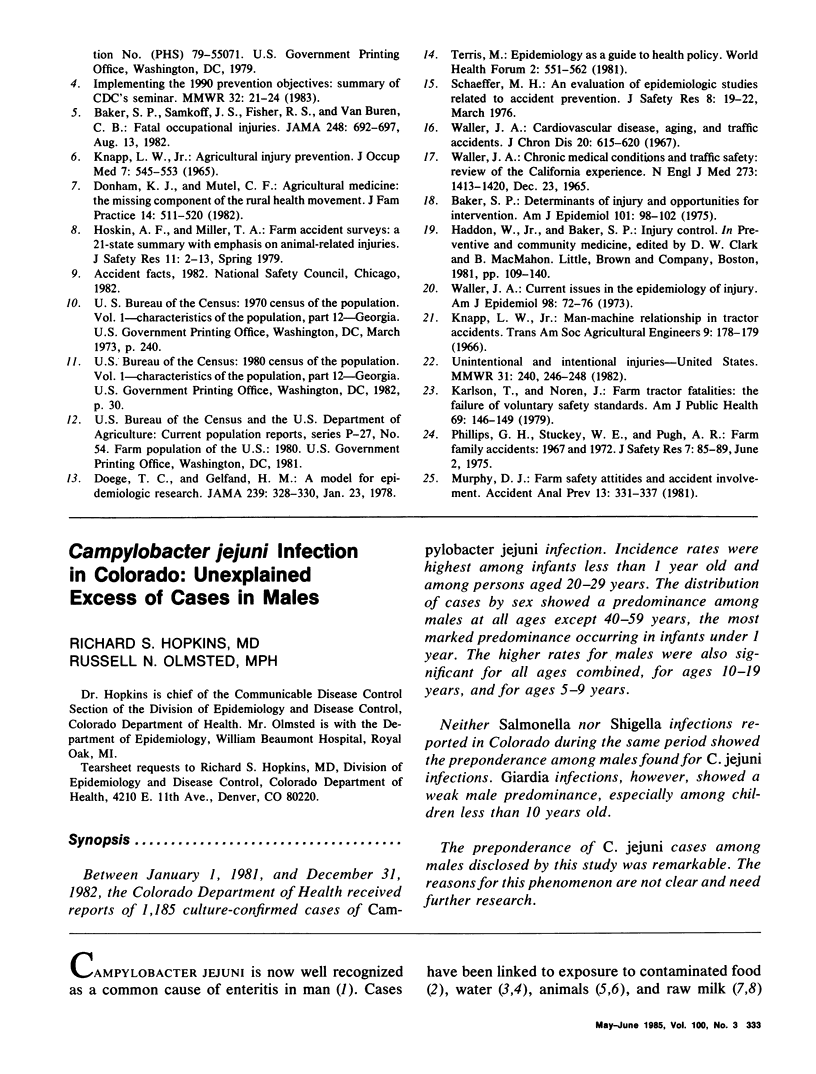Abstract
Death certificates were used as a source of information to characterize fatalities associated with farm tractor injuries in Georgia for the period 1971-81. In this period, 202 tractor-associated fatalities occurred among residents of Georgia; 198 of these persons were males. The annual tractor-associated fatality rate for males based on the population of male farm residents was 23.6 per 100,000; rates of fatal injury increased with age for this population. Persons whose primary occupation was other than farming accounted for more than half of all tractor-associated deaths. Fatal injuries occurred throughout the year but predominantly during the planting and harvesting months. Injuries occurred throughout the day (7 a.m. to midnight), with a peak at 4 p.m. to 5 p.m. Most fatal injuries, 76 percent, resulted when tractors overturned. Fatalities were attributed to crushed chest, exsanguination, strangulation or asphyxia, drowning, and other injuries. Current safety standards for the operation of farm tractors are limited; rollover protective canopies are not required for farm owners or their family members. Descriptive epidemiologic information obtained from death certificates can be used to define injury determinants and to suggest approaches for the further study and prevention of specific types of injuries.
Full text
PDF




Selected References
These references are in PubMed. This may not be the complete list of references from this article.
- Baker S. P. Determinants of injury and opportunities for intervention. Am J Epidemiol. 1975 Feb;101(2):98–102. doi: 10.1093/oxfordjournals.aje.a112083. [DOI] [PubMed] [Google Scholar]
- Baker S. P., Samkoff J. S., Fisher R. S., Van Buren C. B. Fatal occupational injuries. JAMA. 1982 Aug 13;248(6):692–697. [PubMed] [Google Scholar]
- Doege T. C., Gelfand H. M. A model for epidemiologic research. JAMA. 1978 Jan 23;239(4):328–330. [PubMed] [Google Scholar]
- Donham K. J., Mutel C. F. Agricultural medicine: the missing component of the Rural Health Movement. J Fam Pract. 1982 Mar;14(3):511–520. [PubMed] [Google Scholar]
- Karlson T., Noren J. Farm tractor fatalities: the failure of voluntary safety standards. Am J Public Health. 1979 Feb;69(2):146–149. doi: 10.2105/ajph.69.2.146. [DOI] [PMC free article] [PubMed] [Google Scholar]
- Knapp L. W., Jr Agricultural injury prevention. J Occup Med. 1965 Nov;7(11):545–553. doi: 10.1097/00043764-196511000-00001. [DOI] [PubMed] [Google Scholar]
- Waller J. A. Cardiovascular disease, aging, and traffic accidents. J Chronic Dis. 1967 Aug;20(8):615–620. doi: 10.1016/0021-9681(67)90038-0. [DOI] [PubMed] [Google Scholar]
- Waller J. A. Chronic medical conditions and traffic safety: review of the California experience. N Engl J Med. 1965 Dec 23;273(26):1413–1420. doi: 10.1056/NEJM196512232732605. [DOI] [PubMed] [Google Scholar]
- Waller J. A. Current issues in the epidemiology of injury. Am J Epidemiol. 1973 Aug;98(2):72–76. doi: 10.1093/oxfordjournals.aje.a121540. [DOI] [PubMed] [Google Scholar]


